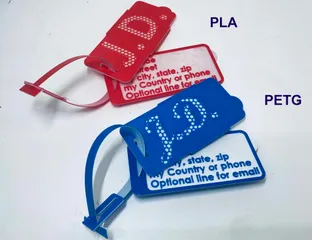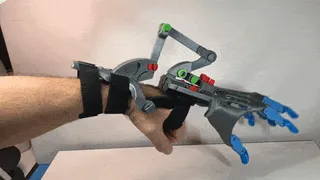SkyHooks
Description
PDFThese were common teaching props in physics and geometry when I was growing up. They never cease to amaze young people the first time they see them in action.
https://www.youtube.com/shorts/u-W-XJE-Hps
I was working on my Dad's bench and saw a wood skyhook that he used to make for his classes. And now here it is in plastic for you too enjoy.
Two models to choose from:
- The curved design which I grew up with gives a very direct downward pressure as well as some elevation before the hover.
- The straight design I came across while researching if this was something worth making in plastic. The lever end is about .5cm from the lever end of the curved. The downward force feels different…. maybe a physics question for the class… are the pressures the same? You can see a sample of that straight model design and its back story here https://www.e-scoutcraft.com/science/sky_hook.html
I took the liberty off tuning the design for plastic vs the wood originals. Plastic is slippery so on the straight arm I added some texture. Both have a small ball at the end to aid in holding it… and on the curve model it blunts what would have been a point. I slimmed down the arch thickness on the curved model since we did not need all that material in plastic. The circles are aesthetic so I hollowed them to reduce their weight which was causing the hover to sit lower.
Printing
Great print at 3mm layer with a .4mm nozzle. No super small details to maintain.
The straight handle has less contiguous surface area so make sure your first layer goes down well.
Operation:
- Belts are the most common material. Heavy belts or belts with heavy buckles may hang lower. The width of the belt is not as important as how ridged the belt is. Try several and compare.
- Locate the approximate center of weight balance (keeping in mind the belt buckle end is heavier… meaning you place it closer to the buckle end).
- Insert the belt. Slide to adjust the center of weight balance… when you are close, try holding it from the end.
Cautions:
- The curved model could be offending to the eyes even with the muted tip. You may want to give smaller children the straight model.
- The large hollow circle at the end of both models allows finger to pass through.
Credits:
- All those designers of yesteryear who came up with these items.
- My two hand models who helped me with the photo.
Tags
Model origin
The author hasn't provided the model origin yet.




